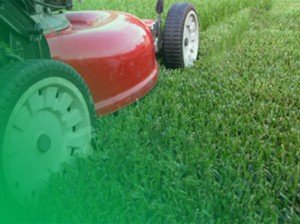Regular Lawn Care
If you care for your lawn regularly, you won’t have to worry about weeds, pests, or bare spots in the garden. Routine mowing, mulching, fertilising and weeding will offer you a host of benefits that make it worth your time. To create a healthy lawn that withstands harsh weather conditions, you have to look after your garden and use products that will help your plants thrive.
Lawn Care Basics
Mowing
One of the best things you can do for your lawn is to mow it periodically so it looks like a lush green carpet. Avoid mowing the grass too short. If you leave the blades taller, they will prevent sunlight from triggering weed germination and growth.
So instead of clipping the grass very short, raise the height setting on your lawn mower to 3 ½ to 4 inches. This is crucial because the height of the grass influences the depth of the roots. Deeper roots trap more water than shorter roots and therefore become drought resistant. The grass will remain healthy and become disease-resistant as well.
Top Dressing
Top dressing serves two purposes; it evens out low-lying areas of the garden and nourishes the lawn. The best time of the year to take on this task is spring. Before adding top soil to the lawn, mow the grass until you’re left with blades that are approximately 2 ½ inches tall. Mowing allows soil and sand particles to reach areas between the blades of grass. Remember, you don’t want to dump topsoil over the grass and bury it.
Buy good quality topsoil that’s free from stones and full of manure and sand. Lay out the top dressing in small piles all over your lawn and distribute it with the back of a steel rake so it evens out all bumps and humps in the garden. Then, use a soil leveller to finish off the job.
Spray your Lawn with a Selective Weed Killer
No matter how beautiful your garden looks, weeds tend to sprout up now and then. To overcome the issue, use a selective weed killer that will effectively control weed germination and growth. If you have just a few weeds in your garden, use a regular weed killer spray to treat each weed. If you have plenty of weeds in your lawn, use a selective weed killer that will target only the weeds, leaving your blades of grass intact.
There are several commercially available products that destroy weeds and fertilise the lawn. They often contain nitrogen, iron, phosphorous, and potassium. These ingredients promote healthy grass growth, leaving you with a lush carpet of green without the pesky weeds as well.
Aerating
Aerating is the process of making holes in the soil – about three to four inches deep – to allow oxygen, water, and fertilisers to penetrate the soil and reach the roots of the grass. This also breaks up the buildup of thatch in your garden. The best way to go about the job is to use a coring machine. If the lawn is too small for this type of machine, you could use a garden fork to dig holes. Make sure you dig holes approximately 10 cm apart.
Dethatching
Thatch is a layer of grass, debris and organic matter that accumulates right below the grass line. It’s most commonly found in lawns that aren’t aerated. If you have less than an inch of thatch buildup, you could aerate the lawn instead of dethatching it.
If the buildup is more than one inch, use a thatching rake or a powered dethatcher. Powered machines can be a little difficult to manoeuvre, but they complete the job quickly and efficiently.
Fertilising and Watering
Don’t forget to fertilise and water the lawn after completing all that hard work. Stick to premium quality fertilisers and follow the manufacturer’s recommended application rates to prevent over fertilising. Lastly, water the lawn to complete the job.
You will have to adjust your watering frequency to make sure your lawn is getting just the right amount of moisture depending on the soil type. If you have clay soil, don’t water it every day. If you have sandy soil, consider watering more frequently. Test the soil to know what you’re dealing with and monitor the lawn’s health during growing season.


